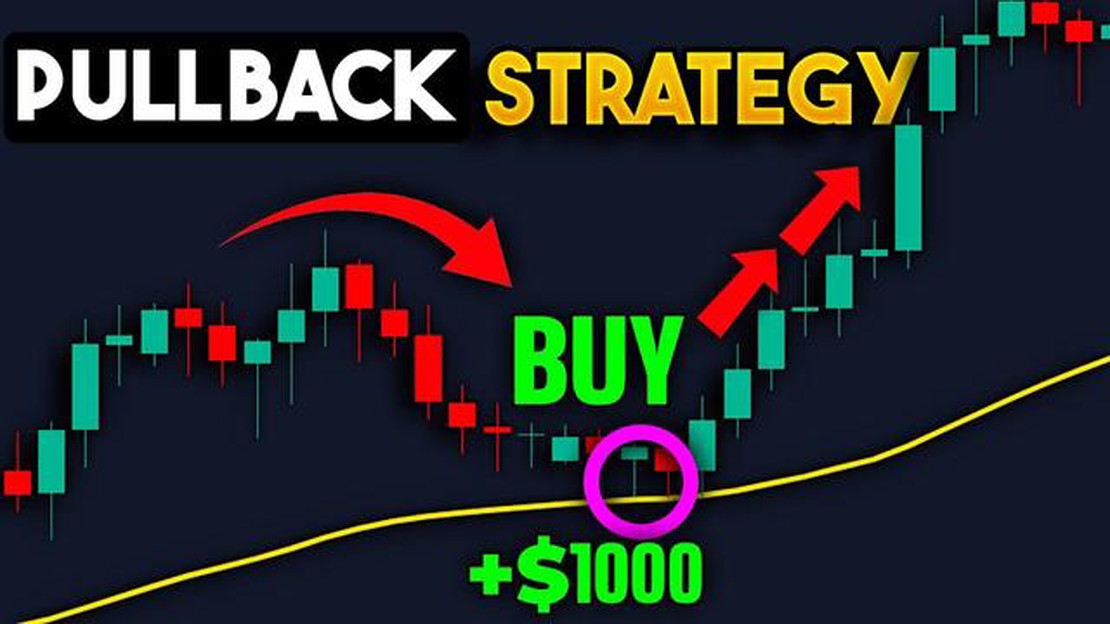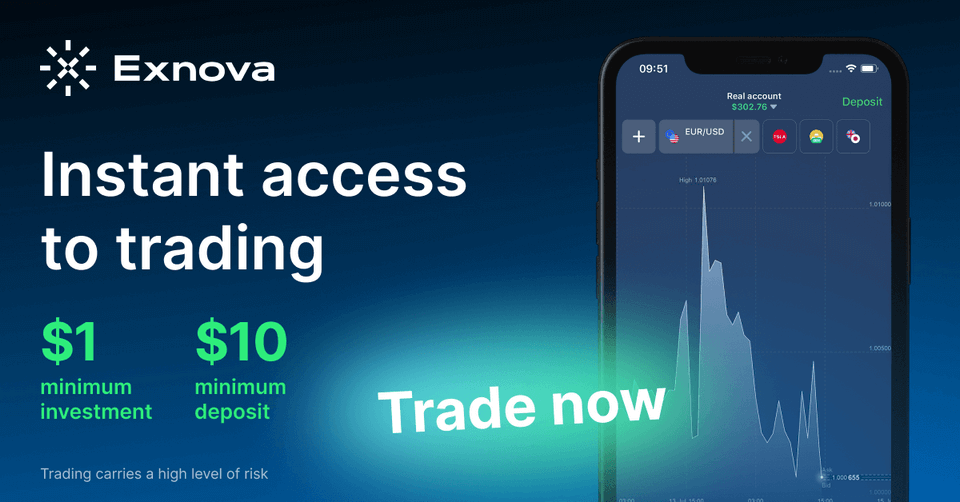Understanding the VWAP Technique: A Comprehensive Guide
Understanding the VWAP Technique: A Comprehensive Guide The Volume-Weighted Average Price (VWAP) technique is a popular tool used by traders and …
Read Article
Many traders rely on technical indicators to identify profitable trade opportunities. One popular indicator is the Exponential Moving Average (EMA). The EMA is a trend-following indicator that aims to smooth out price fluctuations in order to identify the underlying trend.
In this step-by-step guide, we will demonstrate how to trade EMA pullbacks for profitable trading. Pullbacks occur when the price retraces temporarily against the trend, offering traders an opportunity to enter the market at a lower price. By combining the power of the EMA with pullbacks, traders can potentially maximize their profits.
First, traders need to identify the primary trend using the EMA. The EMA is calculated based on a specified number of periods, typically 50 or 200. When the price is above the EMA, it indicates an uptrend, while a price below the EMA suggests a downtrend.
Once the trend is identified, traders should wait for a pullback to enter the market. This can be identified by a temporary retracement of price against the trend, usually indicated by a candlestick pattern or a consolidation period. It is important to note that pullbacks are not reversals, but rather temporary interruptions in the trend.
Next, traders should wait for the price to bounce off the EMA, confirming the resumption of the trend. This can be identified by a candlestick or multiple candlesticks closing above or below the EMA. Once this confirmation is received, traders can enter the market in the direction of the trend, placing a stop loss below the recent swing low or high, depending on the direction of the trade.
EMA stands for Exponential Moving Average. It is a type of technical indicator used in trading to identify trends and potential entry or exit points for trades. EMA is calculated by giving more weight to the most recent data points, which makes it more responsive to current price movements compared to a simple moving average (SMA).
The calculation of EMA involves taking the weighted average of the previous EMA value and the current price. The weight given to the current price depends on the length of the EMA period chosen. A shorter EMA period will place more emphasis on recent price data, while a longer period will give more weight to older data.
Traders use EMA to identify the direction and strength of a trend. When the price is consistently above the EMA, it indicates an uptrend, while being below the EMA suggests a downtrend. Crosses between the price and EMA can also be used to generate trading signals.
EMA pullbacks occur when the price retraces back to the EMA after a move in the trend. Traders often look for these pullbacks as potential buying or selling opportunities, as they can provide a favorable risk/reward ratio.
EMA (Exponential Moving Average) pullbacks can be a profitable trading strategy for several reasons:
 3. Risk Management: EMA pullbacks allow traders to manage their risk effectively. By trading pullbacks to the EMA, traders can set their stop-loss orders just below or above the EMA, limiting their potential losses if the trade doesn’t go as expected. This risk management technique helps traders protect their trading capital and maintain a disciplined approach to trading.
4. High Probability Trades: EMA pullbacks often represent high-probability trading opportunities. When the price pulls back to the EMA, it indicates a temporary pause in the trend, providing traders with a potential entry point at a favorable price. As the market continues in the direction of the trend, traders can capture significant profits.
3. Risk Management: EMA pullbacks allow traders to manage their risk effectively. By trading pullbacks to the EMA, traders can set their stop-loss orders just below or above the EMA, limiting their potential losses if the trade doesn’t go as expected. This risk management technique helps traders protect their trading capital and maintain a disciplined approach to trading.
4. High Probability Trades: EMA pullbacks often represent high-probability trading opportunities. When the price pulls back to the EMA, it indicates a temporary pause in the trend, providing traders with a potential entry point at a favorable price. As the market continues in the direction of the trend, traders can capture significant profits.
Overall, trading EMA pullbacks can be a profitable strategy for traders who want to take advantage of trends in the market. By using the EMA as a guide, traders can identify high-probability trades, manage their risk effectively, and align their trades with the overall trend.
In order to become a profitable trader, it is important to have a solid trading plan and to follow it consistently. Here are the steps to creating a profitable trading strategy:
Read Also: Discover the Easiest and Most Profitable Forex Strategy in 2021
1. Define Your Goals: Start by defining your trading goals. Are you looking to make a full-time income from trading or are you simply looking to supplement your current income? Knowing your goals will help you determine the amount of time and capital you are willing to invest in trading.
2. Choose Your Trading Style: There are various trading styles to choose from, such as day trading, swing trading, or position trading. Each style has its own risks and rewards, so choose one that aligns with your goals and personality.
Read Also: How to effectively use the currency strength meter in MT4
3. Educate Yourself: Before you start trading, it is important to educate yourself about the financial markets and trading strategies. Read books, take courses, and learn from experienced traders to gain knowledge and skills.
4. Develop a Trading Plan: A trading plan is a set of rules that guide your trading decisions. It should include entry and exit strategies, risk management rules, and a plan for monitoring and evaluating your trades.
5. Test Your Plan: Once you have developed your trading plan, test it using historical data or in a simulated trading environment. This will give you confidence in your strategy and help you identify any areas that need improvement.
6. Start Small: When you are ready to start trading with real money, start small. Use only a portion of your capital and avoid taking excessive risks. As you gain experience and confidence, you can gradually increase your position size.
7. Monitor Your Trades: Keep track of your trades and monitor the markets regularly. This will help you identify patterns and trends, and make any necessary adjustments to your trading plan.
8. Evaluate Your Performance: Regularly evaluate your performance to determine what is working and what is not. Keep a trading journal to record your trades and analyze your results. Use this information to make improvements to your strategy.
9. Stay Disciplined: Discipline is key to profitable trading. Stick to your trading plan and avoid emotional decision-making. Trust in your strategy and have the patience to wait for the right trading opportunities.
10. Continuously Improve: Trading is a lifelong learning process. Continuously educate yourself, stay updated with market news, and adapt your strategy as needed. Remember, the markets are constantly changing, and so should your trading approach.
By following these steps and putting in the necessary time and effort, you can increase your chances of becoming a profitable trader. Remember, trading carries risks, so it is important to always manage your risk and never trade with more capital than you can afford to lose.
EMA stands for Exponential Moving Average. It is a type of moving average that gives more weight to recent price data, making it more responsive to recent price changes.
To identify EMA pullbacks, you can look for price retracements or temporary reversals towards the EMA line after a strong trend. These pullbacks can provide trading opportunities in the direction of the overall trend.
EMA pullback trades can be executed on various timeframes depending on the trader’s preference and trading style. It can work on lower timeframes like 5-minute or 15-minute charts for day trading, as well as higher timeframes like 1-hour or daily charts for swing trading.
A good risk-reward ratio for EMA pullback trades is typically at least 1:2 or higher. This means that for every dollar you risk, you aim to make at least two dollars in profit. This helps ensure that your winning trades outweigh your losing trades in the long run.
There are various entry and exit strategies that can be used for EMA pullback trades. Some traders may choose to enter on a break of a trendline or a certain price level, while others may wait for a confirmation candlestick pattern. The exit strategy can involve setting a target profit level or trailing the stop loss behind the moving average.
Understanding the VWAP Technique: A Comprehensive Guide The Volume-Weighted Average Price (VWAP) technique is a popular tool used by traders and …
Read ArticleWhat is a moving average trade? When it comes to trading in the financial markets, understanding various technical indicators is crucial for making …
Read ArticleUnderstanding the Margin Requirements for NSE Options Trading When trading options on the National Stock Exchange (NSE), it is important to understand …
Read ArticleNumber of Public Hospitals in Jordan Jordan is renowned for its excellent healthcare system, which provides high-quality medical services to its …
Read ArticleIs it Possible to Start Trading with $0? Have you ever dreamed of starting your own trading business but hesitated because you thought you needed a …
Read ArticleWhat is an example of an average rate forward? An average rate forward (ARF) is a financial contract that allows parties to exchange a specified …
Read Article